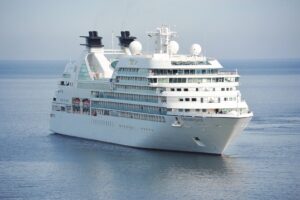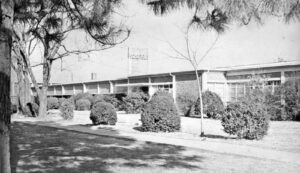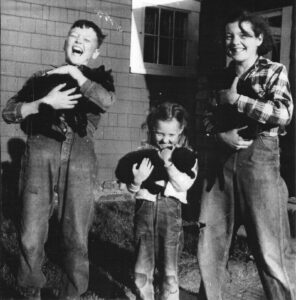The Religious Society of Friends, also known as Quakers, arose in England in the mid 17th century. They were early settlers to the Colonies (future United States) and prominent in many regions until the Revolutionary War. Although Quaker worship varies widely, from silent meetings (about 10% of Quakers) to evangelical services, nearly all are pacifists. The religion has a long history of supporting equality for women, abolition of slavery, non-violence, co-education, prison reform, and social justice. Today there are fewer than 400,000 Quakers world-wide, and about 50% of them live in Africa.
Really? A Quaker gun?
Aren’t Quakers those ardent pacifists who refuse military service and believe all conflict can be resolved through non-violent means?
Well, yes, they are. And that’s actually why it’s called a Quaker gun.
Deception is a centuries-old strategy in battlefield warfare, and the Quaker gun is a perfect example. The art of winning battles without the use of actual weapons is nothing new — just check the story in Judges 7!
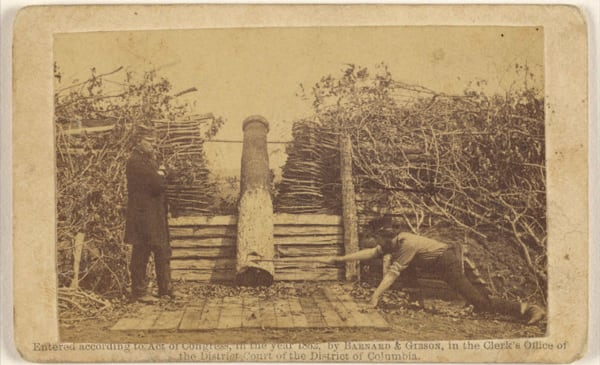
Photo of a Quaker Gun used in the Centreville battle in 1862. The solder is pretending to “fire” the cannon. Photo taken by George N. Barnard, from the Library of Congress collection.
The earliest American example of the Quaker gun that sources discuss occurred during the Revolutionary War, in a stand-off at Rugeley’s Mill north of Camden, South Carolina, on December 4, 1780. There were about 115 Tories, American colonists who were loyal to the British king, holding out in a fortified barn. Outside the barn were a band of Patriots, continental forces, led by Colonel William Washington. (William Washington was in fact a 2nd cousin to George Washington, then Commanding General of the Continental Army, later to become first President of the United States.) The Patriots had no artillery, and their muskets proved futile, so Washington had them build a pretend cannon from a log and point it at the barn door. Washington then gave Colonel Henry Rugeley, who led the Tories, a choice: surrender or suffer attack. The Tories gave up.
In the words of one of Washington’s men, as recounted later, “At Rugely [sic, Rugeley] Mills, there were a large number of Tories assembled. Cols. Moore & Pickens marched there with their Regiments & found the Tories stationed in a house. We had no cannon, cut a pine log; blacked the end & put it on wheels to represent one in order to deceive them in which we succeeded & took them without firing a gun.”
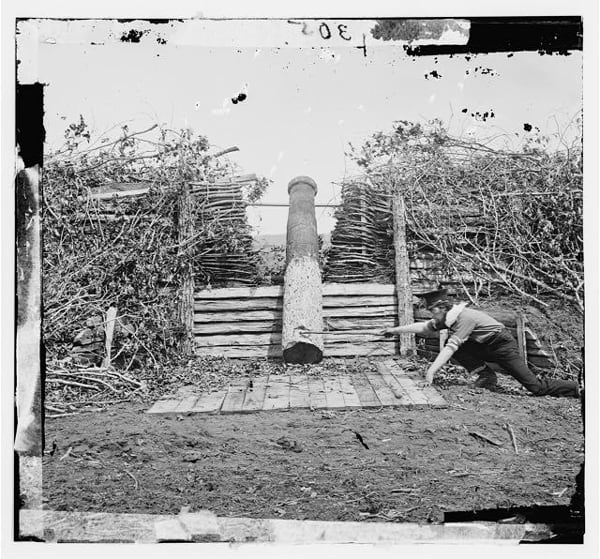
In tracking down the source and copyright status of the first photo above, I came across this photo as well. Thinking at first that it was the same image, but rendered in pure black and white, and somewhat enhanced, I decided to include the older-looking image instead. And then I realized one of the men is missing from this photo! Since these photos predated the ability of Photoshop to add or remove, they both had to be originals. Which begs the question — Why did the 2nd person want to be included, or omitted, from the photo? And how did the soldier on the ground feel about having to pretend to light the fake cannon twice?
Photo taken by George N. Barnard, from the Library of Congress collection.
It was a nice non-violent victory …
In the Peninsula Campaign during the Civil War in 1862, Lincoln’s goal was to gain advantage in the war against the South by surrounding Richmond, the Confederate capital. General George McClellan, who commanded the Army of the Potomac, was to lead the charge. He was given faulty information about the strength of the Confederate position — that it had 100,000 soldiers and at least 300 artillery pieces — and so McClellan declined to engage in battle. In the end, it turned out that there were only 40,000 soldiers, and most of the “artillery pieces” were Quaker Guns, logs painted and propped into position to look like cannons. The illusion of heavy artillery allowed the Confederates to slip away to the Rappahannock River.
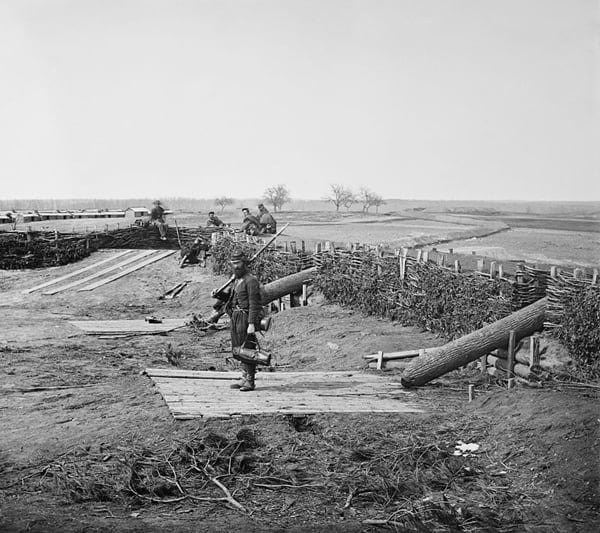
Extensive earthworks defended by Quaker guns in Centreville, 1862.
Quaker guns were used during the Siege of Corinth (Mississippi) as well, allowing the Confederate Army to move out undetected because it appeared that the junction of two railroad lines critical to the Confederate effort were still heavily defended. The counterfeit guns played a role in the Siege of Port Hudson (Louisiana) in 1863 and again in the Siege of Petersburg (Virginia) in 1864 – 65.
Similar tactics were using during World War II. In particular, during the Doolittle Raid on Tokyo, Lieutenant Colonel Jimmy Doolittle outfitted his squadron of B-25s with fake tail guns by mounting broomsticks, painted black, at the tail end of the fuselage.
Dummy tanks were used by the Allied as well as the Axis forces in World War II, often to give the impression that the invading force was much larger than it was, and sometimes to make it appear that a military operation was planned in a different area to distract the enemy from the actual impending invasion.
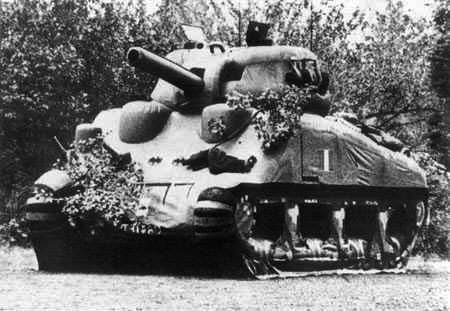
Inflatable M4 Sherman Tank used by United States forces in World War II. Photo property of the United States Government, in the public domain.

